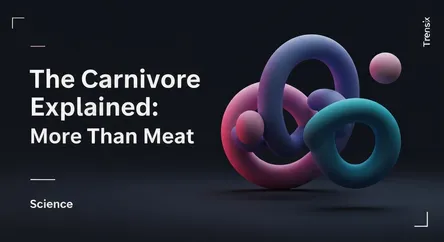Science
The Carnivore Explained: More Than Meat

Discover what a carnivore is, from its vital role in the ecosystem to its recent popularity as a human dietary trend.
What is it?
A carnivore is an organism that gets its primary energy and nutrients from eating animal tissue. This is achieved either through predation (hunting live animals) or scavenging (consuming dead animals). In the natural world, carnivores are essential components of the food web, acting as predators that help control prey populations. They are classified based on their diet: obligate carnivores, like cats, must eat meat to survive, while facultative carnivores, like dogs, can survive on non-animal food but function best with meat. Famous examples range from apex predators like lions and sharks to smaller hunters like spiders and eagles.
Why is it trending?
The term 'carnivore' is trending for two main reasons. Biologically, the role of carnivores is increasingly studied in the context of ecosystem health and conservation, as the loss of apex predators can have cascading negative effects. However, the more significant recent trend comes from the 'carnivore diet' for humans. This controversial diet involves consuming only animal products—meat, fish, and eggs—and eliminating all plant-based foods. Proponents claim it can lead to weight loss and reduced inflammation, sparking widespread discussion across social media and health forums.
How does it affect people?
Ecologically, carnivores are vital for human well-being. By regulating herbivore populations, they prevent overgrazing, which protects agriculture and maintains balanced ecosystems that provide essential resources. The trending human carnivore diet has a more direct impact. While some individuals report significant health benefits, nutritionists and doctors raise concerns about potential long-term risks, such as nutrient deficiencies (like fiber and vitamin C) and increased risk of heart disease due to high saturated fat intake. This highlights a fascinating intersection where a biological classification directly influences human culture, health choices, and scientific debate.